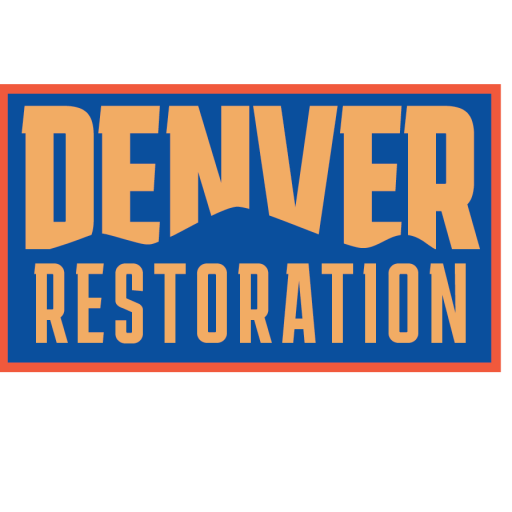Planning for Emergencies: The Key to Damage Control
Imagine waking up to a home filled with water or returning from a vacation to find it damaged by fire. Such scenarios can be traumatic and the pain of loss can be immeasurable. Disaster preparedness is not a topic most people want to dwell on, but being ready for the unexpected is an essential part of home ownership or property management.
Understanding Disaster Readiness
Disaster readiness involves the proactive planning and taking preventative measures against the potential damage from fires, water, and mold. It encompasses a wide range of actions, from installing fire detectors and maintaining plumbing systems to understanding the specifics of your insurance coverage in the event of water or fire damage.
The Role of Prevention in Disaster Preparedness
The cornerstone of disaster readiness is prevention. Here are some measures to consider:
– Regularly inspecting and maintaining home systems such as HVAC, plumbing and electrical
– Ensuring that smoke detectors are functioning properly
– Storing valuable documents and irreplaceable items in fire and water-resistant safes
Doing these not only prevents the likelihood of experiencing emergencies, but also minimizes the damage in the unfortunate event that an emergency does occur.
Preparing Yourselves and Your Homes for the Unforeseen
Disaster preparedness also involves developing an emergency plan for your family or employees. This includes understanding evacuation routes, identifying safe shelter locations within your property, and maintaining an updated list of emergency contacts.
Being prepared even extends to knowing what to do immediately after a disaster strikes to secure your property and mitigate further damage. This involves calling for professional assistance, safely evacuating the premises if necessary, and documenting the damage for subsequent insurance claims.
When it comes to disaster preparedness, understanding the legal and insurance aspects can be quite daunting, but is essential. Most homeowners and property insurance policies cover fire and water damage, but it’s important to be aware of any limitations and exclusions.
Knowing how to navigate the often-complex insurance claim process is a critical part of disaster preparedness. This includes knowing what documents to have at hand, taking photographs of damages and maintaining records of all communication with your insurer.
Why Professional Help Matters
Restoring a property after damage from water, fire, or mold is not a task for the untrained. It requires expertise in damage assessment, restoration techniques, equipment operation, environmental and health safety, and crisis management.
Working with professionals in the disaster restoration industry can help ensure the task is completed quickly and safely, reducing disruption to your life. Professionals have the skills to accurately assess the damage and execute appropriate restoration processes. They can also guide you in complying with insurance and legal requirements, streamlining the process and reducing your stress.
Empowering Property Owners through Disaster Preparedness Tips
In an ideal world, no one would have to deal with the aftermath of a disaster. However, the reality is that emergencies do occur. It is essential for property owners to be informed and prepared.
When it comes to disaster preparedness, knowledge is truly power. Understanding the risks, knowing the steps to mitigate damage, and knowing when to call in professionals can give you peace of mind and save you significant stress and expense.
By empowering yourself with our readiness tips, you can effectively safeguard your property and better navigate the aftermath of a disaster with confidence and a sense of control. With informed action, you can turn the tide of a potential disaster and ensure smooth recovery.
Remember, being prepared is half the victory. Begin your journey of readiness today – it’s your best defense against the unexpected.
Embrace Training: Be Knowledgeable in Emergency Situations
Knowledge is a significant part of readiness, it empowers and prepares you to handle disaster situations effectively. For instance, training on how to use a fire extinguisher is not something you just brush off. It’s part and parcel of the broader disaster preparedness strategy.
Training incorporates an array of areas such as understanding the procedures for shutting off utilities like gas, electricity, and water, which is crucial to preventing further damage in the event of an emergency. Also, training on basic first aid techniques is essential, as it could be critical for the survival of a loved one or colleague caught up in an emergency before professional help arrives.
The Value of a Well-Stocked Emergency Kit
A well-stocked emergency kit is a perfect example of the old saying, “Better safe than sorry.” An emergency kit equips you with necessary supplies that might not be readily available during a disaster. Essential items could include first aid supplies, a battery-powered radio, flashlights, spare batteries, non-perishable food, bottled water, and essential medication.
As part of your proactive disaster readiness approach, you need to ensure that your emergency kits are easily accessible, regularly maintained, and updated. An emergency can strike when least expected, and having necessary supplies at hand could be a lifesaver.
Protecting Your Business – The Need for a Business Continuity Plan (BCP)
For business owners, the scope of disaster preparedness extends much further. Beyond the physical safety of your employees and premises, there’s a need to safeguard the survival of your business operations. A Business Continuity Plan (BCP) is a crucial document that outlines recovery strategies and solutions to ensure that your business can continue operating after a disaster.
The deployment of the BCP aims to minimize downtime and ensure the least disruption to business operations. A comprehensive BCP includes identifying critical business functions, detailing specific roles and responsibilities during and after a crisis, specifying data backup processes, and outlining communication strategies to stakeholders amongst other essential elements.
Exploring the Role of Restoration Experts in Disaster Management
Successful restoration following a disaster requires more than just cleaning up and repairing visible damage. It involves a highly coordinated and systematic approach to cleaning, repair, and restoration. This requires a depth of knowledge and extensive understanding of the restoration process, enabling you to make important decisions that could potentially save you money and ensure your home or business is correctly restored.
Working with trained, experienced, and certified professionals in the disaster restoration field, such as those found at CDC’s Office of Response and Restoration, offers numerous benefits. These experts are proficient in a wide array of restoration services that cater to fire, water, and mold damage. Additionally, they integrate advanced techniques and state-of-the-art equipment into their restoration protocols, ensuring an efficient, thorough, and health-conscious treatment of the affected areas.
Resilience – Moving Forward After a Disaster
The post-disaster period is often marked by a sense of loss and uncertainty. However, a disaster doesn’t have to translate into a prolonged period of pain and anguish. Resilience in the face of adversity is the best path forward, and being prepared definitely bolsters that resilience.
Embracing the reality of the situation, setting realistic expectations for recovery, and reaching out for professional help when needed are all important steps toward recovery. While you may feel a strong desire to regain normalcy quickly, remember that recovery is a process and that patience and persistence are key.
Cultivating a Culture of Preparedness
As responsible homeowners, business owners, or property managers, your disaster preparedness efforts should extend beyond personal readiness. Encouraging a culture of preparedness among family members, employees, or tenants is crucial.
This could involve conducting regular briefings on safety procedures, investing in group training sessions, organizing drills, and promoting open discussions on safety. This collective approach not only ensures everyone is aware and prepared, but it also fosters a supportive community that can rally together during and after a disaster.
Remember, no one is ever too prepared when it comes to emergencies. Start adopting the recommended strategies and remember always to be alert and aware. You have the power to mitigate the impact of a disaster and pave the way for a smooth recovery. So, why wait? Start enhancing your disaster preparedness today and remember that readiness today is better than recovery tomorrow.

